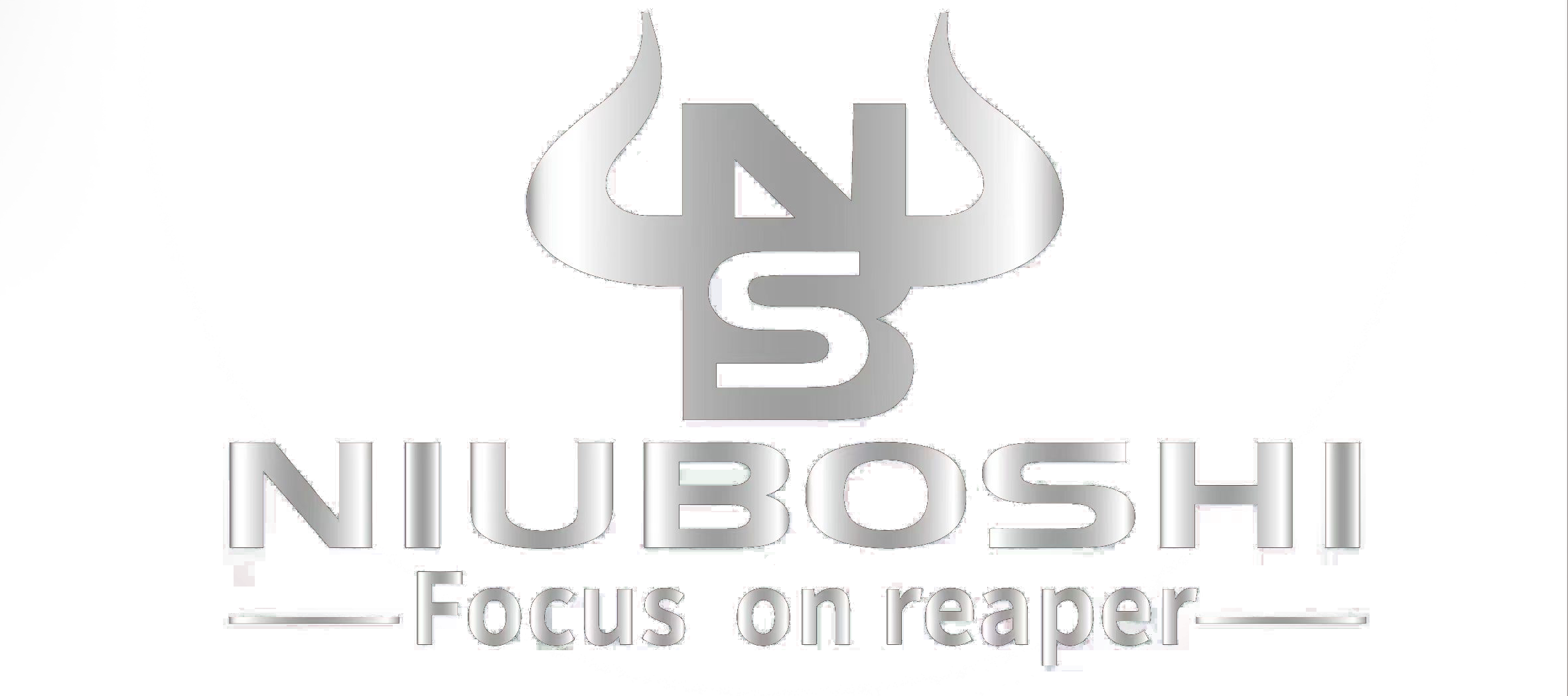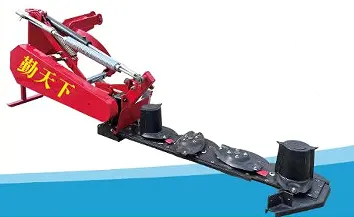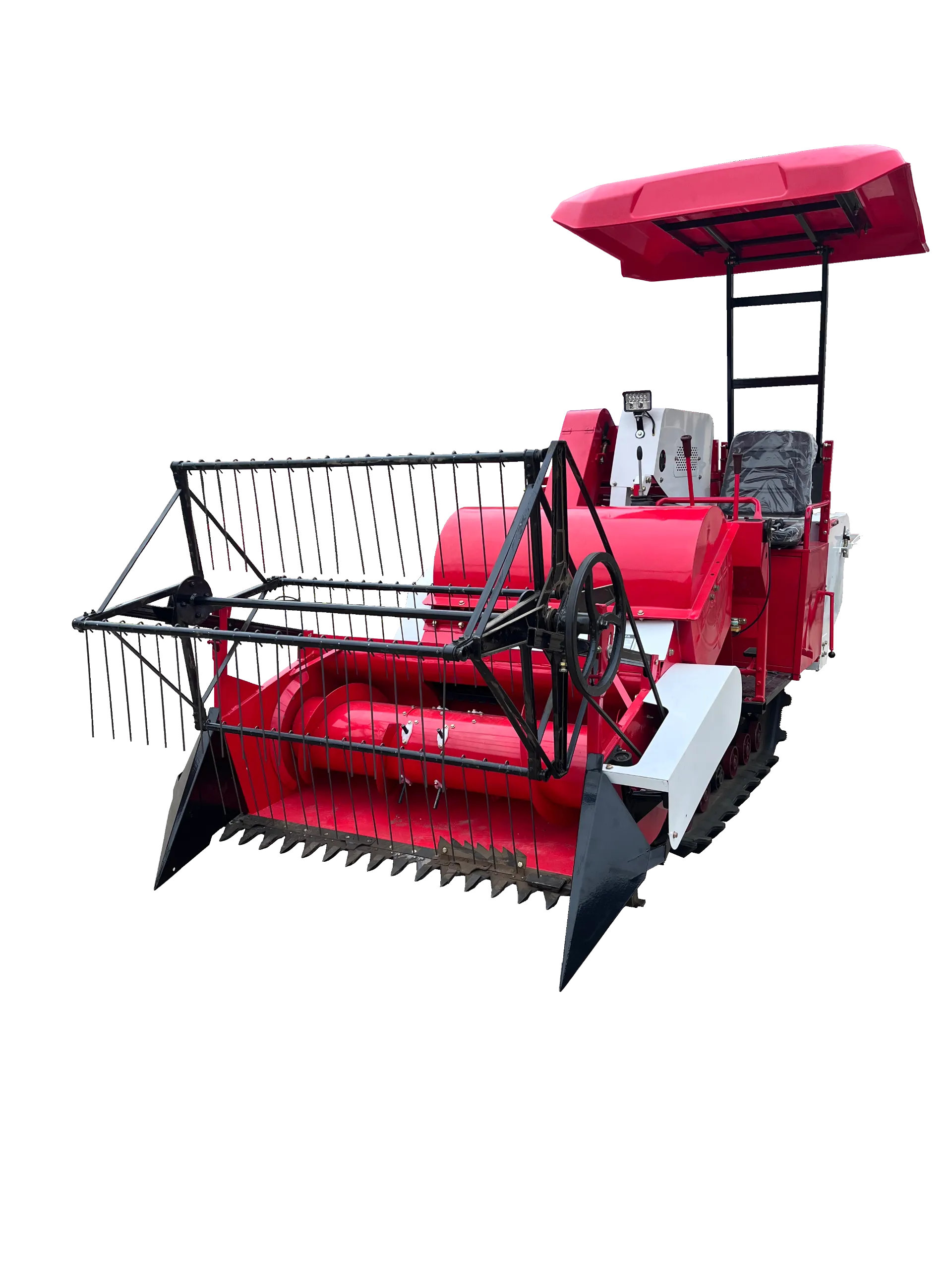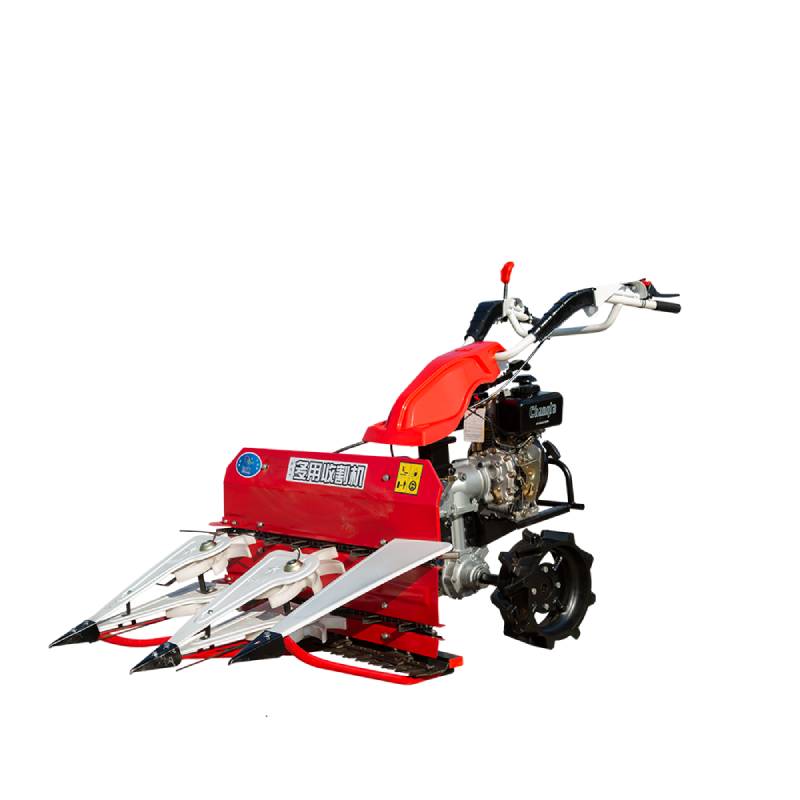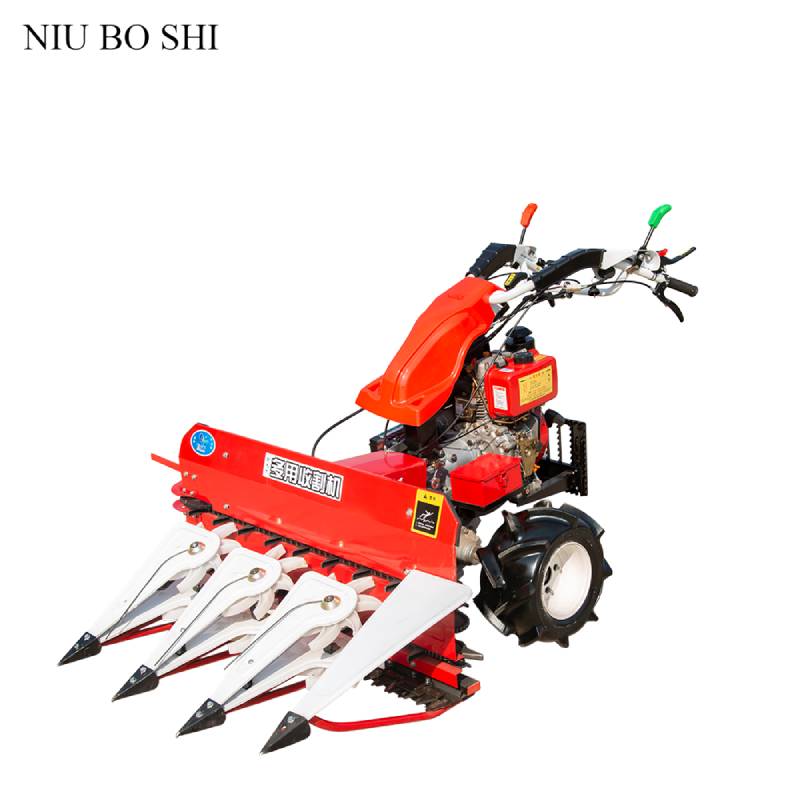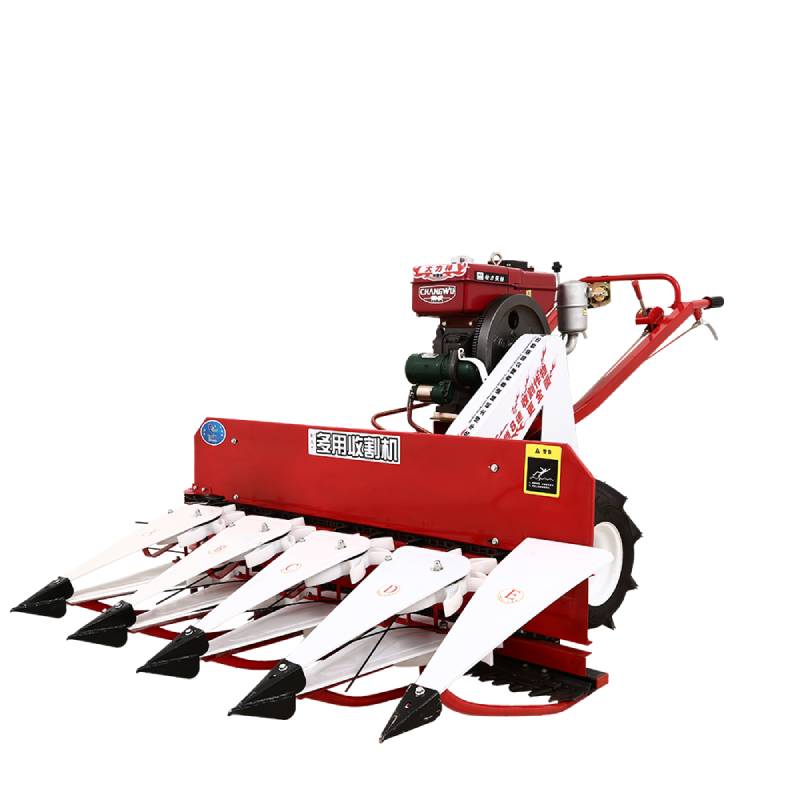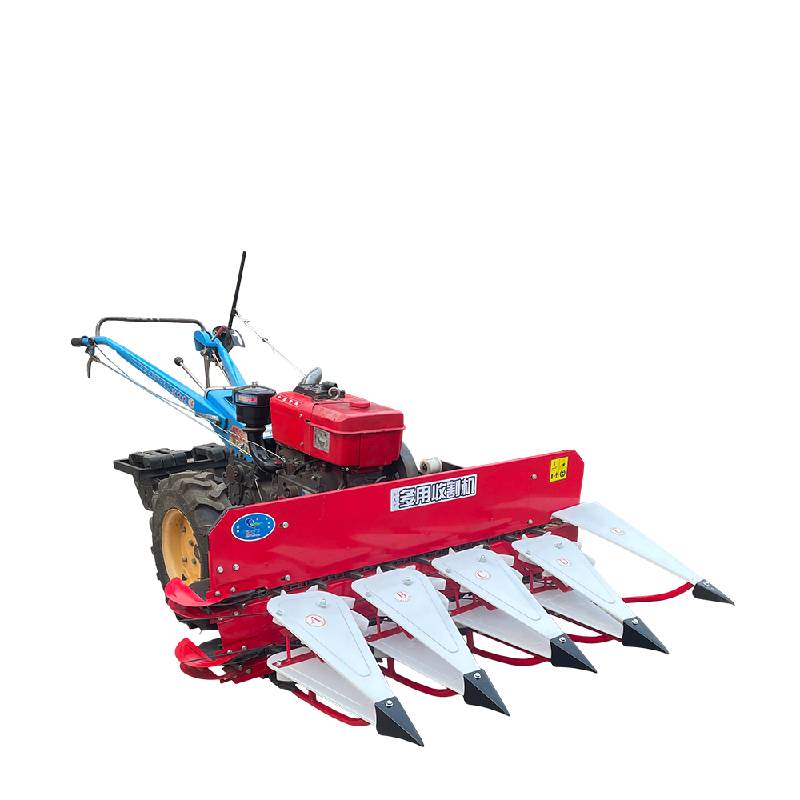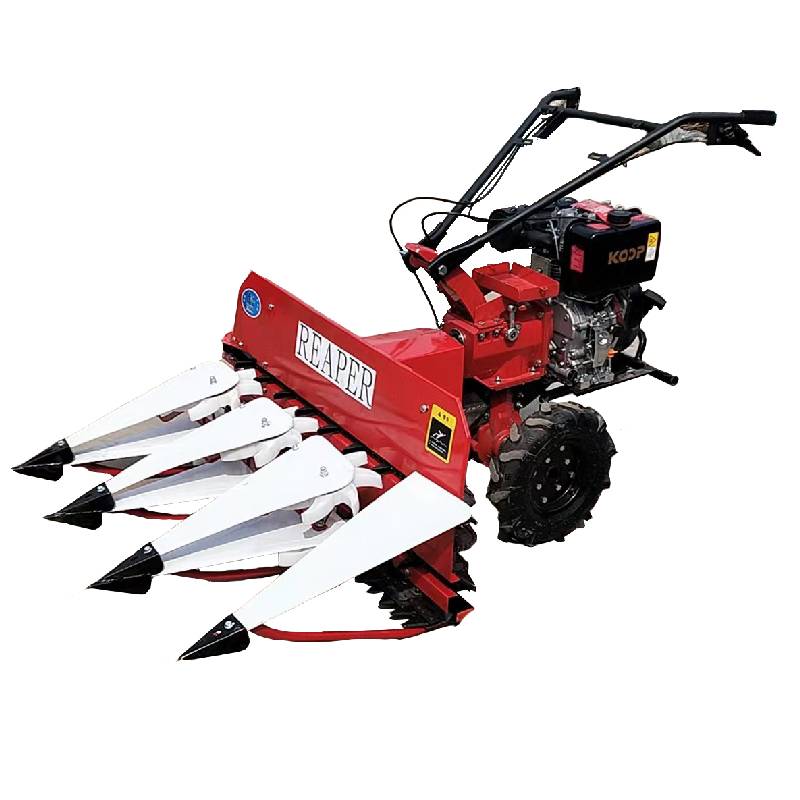Reaper Binder Machine: Harvest Grass & Crops Efficiently
Understanding the Advanced reaper binder: An Agricultural Revolution
The agricultural sector is undergoing a profound transformation, driven by the imperative to enhance efficiency, reduce labor costs, and maximize yield. At the forefront of this evolution stands the modern reaper binder, a critical piece of machinery designed to streamline harvesting operations for a variety of crops, including wheat, rice, soybeans, and forage grasses. This technology represents a significant leap from traditional manual methods, offering unparalleled speed, precision, and consistency in cutting and binding. Our product, the Walking Tractor Mounted Reaper Head, exemplifies this advancement, integrating seamlessly with existing walking tractors to provide a versatile and robust harvesting solution. The increasing demand for precision agriculture tools, fueled by global food security concerns and fluctuating labor availability, underscores the vital role of machines like the reaper binder. Industry trends indicate a strong shift towards mechanization, particularly in developing agricultural economies, where these machines offer a rapid return on investment by significantly increasing operational capacity. Furthermore, the development of specialized versions, such as the mini reaper and grass reaper machine, addresses niche requirements, proving the adaptability and versatility of this foundational technology across diverse farming scales and crop types. The technical sophistication of these units ensures minimal crop loss and optimal preparation for subsequent processing stages, making them indispensable for modern farming practices aimed at sustainable productivity.
The Advanced Manufacturing Process of a Reaper Binder
The production of a high-performance reaper binder involves a meticulous multi-stage manufacturing process, ensuring durability, efficiency, and safety. This begins with the careful selection of raw materials, primarily high-strength carbon steel and alloy steels, chosen for their superior wear resistance and structural integrity, critical for components like the cutting blades and binding mechanisms. Our materials conform to international standards such as ASTM A36 for structural components and AISI 4140 for critical moving parts, ensuring robust performance under demanding agricultural conditions. The manufacturing journey typically starts with precision cutting using advanced laser or plasma cutters, followed by forming processes like bending and stamping to create the specific geometries of the machine's frame and guards. Key components, such as gears and shafts, undergo forging to enhance their grain structure and strength, followed by precise CNC machining to achieve tight tolerances essential for smooth operation and longevity. Welding, often utilizing robotic systems for consistency and strength, joins the various sub-assemblies.
Surface treatments, including powder coating or electroplating, are then applied to provide robust corrosion resistance against environmental factors such as moisture and agricultural chemicals, extending the product's lifespan significantly. Each stage of this process is subject to rigorous quality control, adhering to ISO 9001 standards for manufacturing quality and ANSI standards for specific component dimensions and tolerances. Non-destructive testing methods, such as ultrasonic testing for welds and magnetic particle inspection for critical stress points, are routinely employed to detect any subsurface defects. This comprehensive approach ensures that our reaper machine components meet stringent performance criteria, contributing to an impressive projected service life of 10-15 years under regular maintenance. While the core application is agricultural, the precision and material quality standards employed are analogous to those found in demanding sectors, ensuring reliability. The integration of advanced manufacturing techniques also contributes to the overall energy efficiency of the production process, minimizing waste and optimizing resource utilization.
Technical Parameters and Performance Benchmarks of Modern Harvesting Equipment
Understanding the technical specifications of a reaper binder is crucial for agricultural professionals seeking to optimize their harvesting operations. Our Walking Tractor Mounted Reaper Head, a prime example of a versatile reaper harvester, is engineered to deliver exceptional performance across various field conditions. Key parameters include its cutting width, which directly influences the operational efficiency and acreage covered per hour, ranging from 80cm to 120cm for our popular models, allowing for adaptability to diverse farm sizes. The power source compatibility is also critical; designed to mount on standard walking tractors with engine powers typically ranging from 8 HP to 15 HP, it ensures broad compatibility and ease of integration for existing equipment owners. The operational speed, often around 3-5 km/h, combined with a high cutting efficiency, significantly reduces the time required for harvesting. The machine employs a reciprocating cutter bar mechanism, known for its clean cutting action and minimal crop damage, which is vital for preserving the quality of the harvested produce.
The binding mechanism, a core feature of the reaper binder, precisely forms bundles of uniform size, simplifying subsequent handling and storage. This mechanism is adjustable to accommodate different crop densities and stalk thicknesses. Through extensive field testing and validation against international performance benchmarks, our products consistently achieve a harvesting efficiency exceeding 95%, with crop loss rates maintained below 1.5%. These figures are critical for ensuring maximum yield recovery and demonstrating the machine’s economic viability. The structural design also prioritizes balance and stability, crucial for effective operation on uneven terrains, which are common in many agricultural settings. Furthermore, specific attention is given to the material specification of the cutting blades, often made from specialized hardened steel alloys, ensuring prolonged sharpness and reduced maintenance frequency for the reaper cutting components. The overall design emphasizes a low center of gravity to enhance safety and ease of maneuverability, allowing operators to work with confidence and precision.
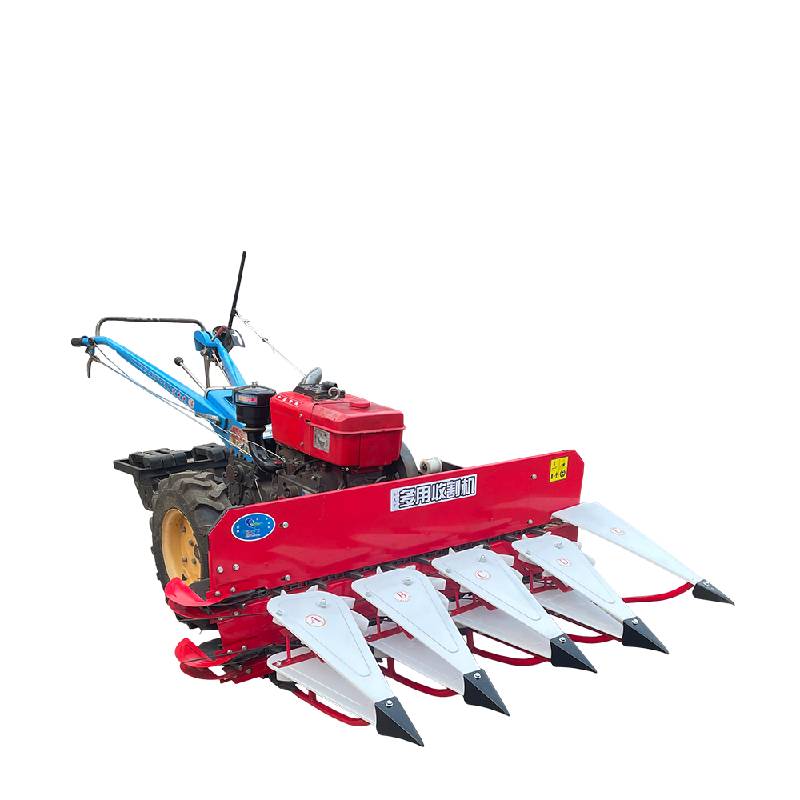
Key Technical Specifications: Walking Tractor Mounted Reaper Head
| Parameter | Value/Range | Unit |
|---|---|---|
| Cutting Width | 80 - 120 | cm |
| Matched Power (Walking Tractor) | 8 - 15 | HP |
| Operating Speed | 3 - 5 | km/h |
| Productivity | 0.2 - 0.4 | Hectares/hour |
| Harvesting Efficiency | > 95 | % |
| Total Weight (Reaper Head) | Approx. 80 - 120 | kg |
| Binding Rate | > 98 | % |
Applications and Advantages in Modern Agriculture
The versatility of the reaper binder makes it an indispensable tool across a broad spectrum of agricultural applications. Primarily, it excels in harvesting stalk-based crops such as wheat, rice, oats, barley, and sorghum, where its ability to precisely cut and bind sheaves is invaluable. Beyond grains, specialized variants like the grass reaper machine are critical for forage harvesting, efficiently bundling hay and other fodder crops, which are essential for livestock farming. This adaptability extends to different scales of operation, from small and medium-sized family farms that benefit from the cost-effectiveness and maneuverability of a mini reaper to larger commercial enterprises utilizing multiple units for extensive fields. The core technical advantage lies in its ability to significantly reduce manual labor, a critical factor in regions facing labor shortages or aiming to reduce operational expenditures. By automating the cutting and binding processes, farmers can achieve higher productivity rates with fewer personnel, translating directly into increased profitability and reduced harvest time, minimizing exposure to adverse weather conditions.
Furthermore, the precision of the reaper binder ensures minimal crop loss during harvesting, maximizing yield recovery. The uniform bundles produced by the binding mechanism simplify subsequent operations such as threshing, transportation, and storage, contributing to an overall more streamlined post-harvest process. Our Walking Tractor Mounted Reaper Head offers additional advantages in terms of fuel efficiency due to its optimized power transfer system from the walking tractor, leading to lower operating costs per acre compared to less efficient alternatives. The robust construction and use of anti-corrosion materials ensure longevity, even when exposed to harsh agricultural environments, reducing the total cost of ownership over its lifespan. Field tests have consistently shown a reduction in harvesting time by up to 70% compared to traditional manual methods, providing farmers with greater flexibility in their planting and harvesting schedules. The ergonomic design also aims to minimize operator fatigue, enhancing safety and comfort during prolonged use. These combined benefits underscore the pivotal role of the reaper machine in advancing sustainable and profitable farming practices globally.
Tailored Solutions, Proven Authority, and Unwavering Trust
As a leading manufacturer, our commitment extends beyond standard product offerings to encompass comprehensive customized solutions for diverse client needs. We understand that agricultural operations vary significantly in scale, crop type, and terrain, necessitating bespoke adjustments to our reaper binder systems. Our technical teams engage in detailed consultations to ascertain specific requirements, whether it involves modifying cutting widths, adjusting binding mechanisms for unique crop characteristics, or developing specialized attachments for particular walking tractor models. This client-centric approach ensures optimal performance and seamless integration into existing farming ecosystems. Our authority in the agricultural machinery sector is underpinned by decades of experience and a strong portfolio of industry certifications, including ISO 9001:2015 for quality management systems and various regional agricultural machinery certifications that attest to our products' compliance with performance and safety standards. We proudly cite our partnerships with leading agricultural research institutions and associations, which facilitate continuous innovation and adherence to global best practices.
Our trustworthiness is further solidified by transparent operational practices, including clear delivery cycles and robust after-sales support. Typically, the delivery period for standard reaper binder units ranges from 15 to 30 days, contingent on customization levels and order volume, with expedited options available for urgent requirements. We provide a comprehensive 12-month warranty on all mechanical and structural components, covering manufacturing defects and ensuring peace of mind for our clients. Beyond the warranty, our dedicated customer support team offers technical assistance, spare parts availability, and maintenance guidance, ensuring the longevity and continuous high performance of your reaper machine. An illustrative case study involves a large-scale rice farm in Southeast Asia, which, after deploying our customized Walking Tractor Mounted Reaper Heads, reported a 25% increase in harvesting speed and a 10% reduction in post-harvest processing time within their first season, validating our solutions' tangible impact. These real-world results, combined with our rigorous testing protocols and adherence to global safety standards, build confidence and demonstrate our unwavering commitment to client success.
Frequently Asked Questions (FAQ) about Reaper Binders
Q1: What types of crops can a reaper binder effectively harvest?
A: A modern reaper binder, especially our Walking Tractor Mounted Reaper Head, is highly versatile and capable of harvesting a wide range of stalk-based crops. This primarily includes common grains like wheat, rice, barley, oats, and rye. It is also highly effective for various oilseed crops such as soybeans, as well as fodder crops including various types of grasses and alfalfa, making it a valuable grass reaper machine. The adjustable cutting height and binding mechanism allow for optimal performance across different crop heights and densities, ensuring clean cutting and efficient bundling. For specific applications or less common crops, it is recommended to consult with our technical support team to confirm compatibility and discuss any potential necessary adjustments or specialized attachments, guaranteeing that the machine meets your precise agricultural needs and delivers the expected performance and efficiency in your unique farming context.
Q2: How does the reaper binder improve harvesting efficiency compared to manual methods?
A: The improvement in harvesting efficiency with a reaper binder is substantial, primarily due to its mechanized operation that replaces laborious manual tasks. Our units can harvest multiple rows of crops simultaneously, with a significantly higher speed and consistency than human labor. The integrated binding mechanism automatically collects and ties the cut stalks into uniform bundles, eliminating the need for separate manual collection and tying, which are time-consuming and labor-intensive processes. This automation not only drastically reduces the required workforce but also minimizes the overall harvesting time, allowing farmers to complete harvests quickly, especially beneficial during optimal weather windows. This translates into increased productivity, reduced operational costs, and a more timely harvest, which can lead to better crop quality and reduced post-harvest losses, solidifying the reaper machine as an indispensable tool for modern agricultural productivity.
Q3: What maintenance is required for a reaper binder?
A: Regular and systematic maintenance is crucial to ensure the longevity and optimal performance of your reaper binder. Key maintenance tasks include routine lubrication of moving parts, particularly the cutting blades, gears, and binding components, using appropriate agricultural-grade lubricants. It is essential to regularly inspect the blades for sharpness and wear, replacing them when necessary to maintain efficient reaper cutting action. Checking and tightening all bolts and fasteners is also important to prevent loosening due to vibration during operation. Furthermore, keeping the machine clean, especially after use in muddy or dusty conditions, helps prevent buildup that could hinder performance or accelerate wear. Seasonal maintenance, including comprehensive checks of belts, chains, and the engine (if integrated), should be performed by a qualified technician. Adhering to the manufacturer’s recommended maintenance schedule, detailed in the user manual, will significantly extend the machine's operational life and maintain its high efficiency.
References and Further Reading
- American Society of Agricultural and Biological Engineers (ASABE) Standards for Harvesting Machinery Performance.
- Food and Agriculture Organization of the United Nations (FAO) Publications on Agricultural Mechanization and Crop Harvest Technologies.
- International Organization for Standardization (ISO) 9001:2015 Guidelines for Quality Management Systems in Manufacturing.
- Journal of Agricultural Engineering Research (JAER) articles on cutting mechanisms and binding efficiency in cereal harvesting.
- Advances in Engineering Research, focusing on material science applications in agricultural implements for enhanced durability.
Latest news
-
When to Upgrade Your Old Forage HarvesterNewsJun.05,2025
-
One Forage Harvester for All Your NeedsNewsJun.05,2025
-
Mastering the Grass Reaper MachineNewsJun.05,2025
-
How Small Farms Make Full Use of Wheat ReaperNewsJun.05,2025
-
Harvesting Wheat the Easy Way: Use a Mini Tractor ReaperNewsJun.05,2025
-
Growing Demand for the Mini Tractor Reaper in AsiaNewsJun.05,2025
